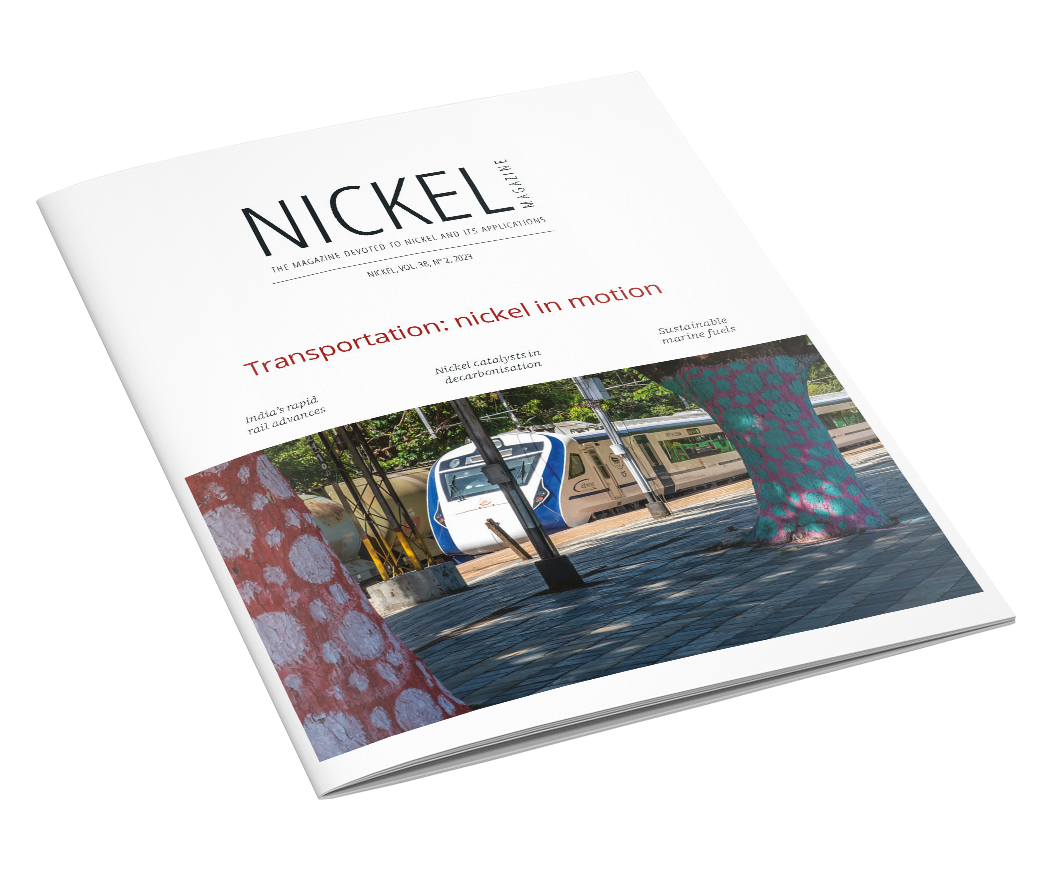From metro to mainline, Indian Railways (IR) is one of the world’s largest rail networks under a single administration, handling over 22 million passengers and approximately 3.5 million tonnes of freight daily. It is recognised as one of the world’s largest commercial employers, with over 1.6 million employees. To keep up with the pace of change from population growth, urbanisation, and industrialisation, the Indian rail sector is undergoing rapid development, aiming to create a faster, more efficient, and expansive network.
Full spead ahead - Nickel in India's rapidly expanding rail networks
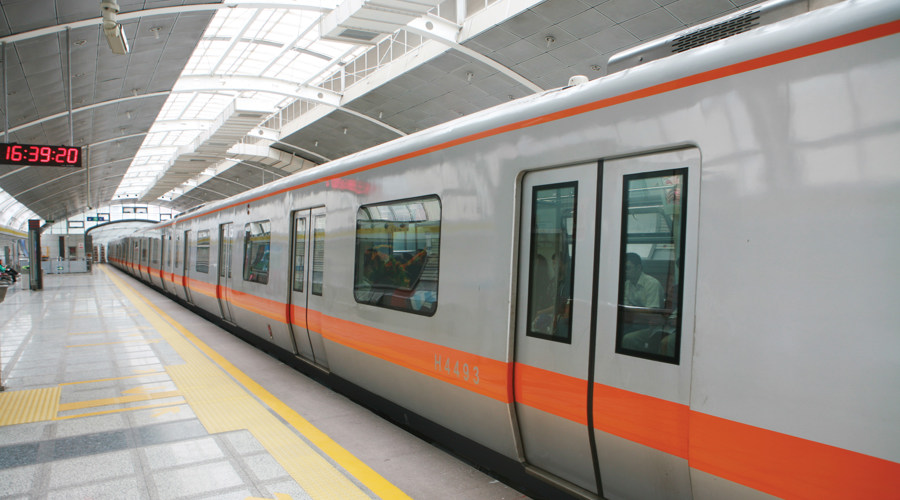
The ambitious future of India’s rail infrastructure requires prudent investments that ensure its long-term viability. This is where nickel-containing steels play a vital role.
The modernisation of India’s rail system, both metro and mainline, encompasses various aspects. These include increasing the speed of both freight and passenger systems, electrifying the entire network, and rapidly expanding rail lines within and between cities. Such a monumental shift necessitates the adoption of innovative train technologies and the development of stations and platforms on an unprecedented scale.
Metros multiplying in major cities
First opened in Delhi in 2002, metro rail systems have become a common sight in almost all major Indian cities, either operational or in various stages of construction. These metro systems rely extensively on unpainted austenitic stainless steels, with nearly 100% of metro coach shells made from nickel-containing steels. These materials that offer lightweight, high-strength construction with exceptional durability and resilience. Each metro coach incorporates approximately 8 tonnes of Type 301LN (UNS S30153) stainless steel, exhibiting cold-worked yield strength levels ranging from 345 to 690 MPa (50 to 100 ksi). The benefits include reduced weight, enhanced energy efficiency, elimination of painting requirements, and significantly decreased maintenance needs.
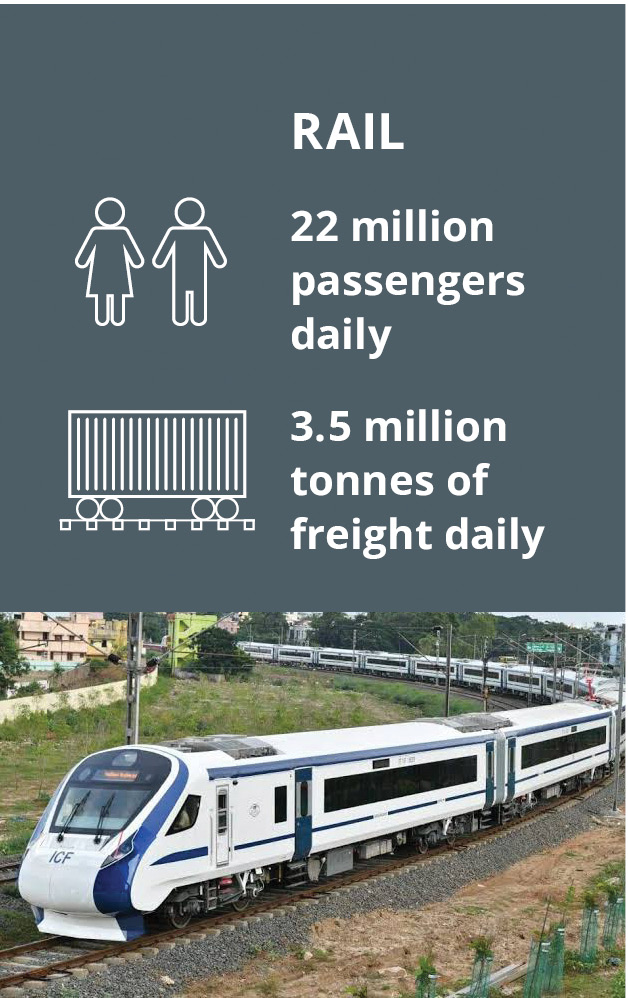
Already, more than 3,000 metro coaches are in operation, with an additional 3,000 coaches scheduled to be added within the next three to five years. To meet this surging demand, three metro rail coach factories are in operation, two are in advanced stages of construction, and two more are in the planning phase. These developments position India to potentially become a global hub for metro coach manufacturing.
Stainless steel in every station
The Indian metro network currently comprises 660 functional stations, with a further 228 under construction and 213 in the planning phase. In addition, another 500 stations will be built in the foreseeable future. Given that metro systems operate extensively throughout the day, maintenance of the infrastructure, particularly the stations, becomes a costly and challenging task.
To minimise maintenance requirements and increase serviceability and lifespan, the use of nickel-
containing stainless steels is highly recommended for railing systems, cladding, canopies, counters, signage, and various other utility functions. Tenders for all such applications specify the use of Type 304 (S30400) stainless steel.
To date, metro stations completed or under construction, have required about 30,000 tonnes of stainless steel.
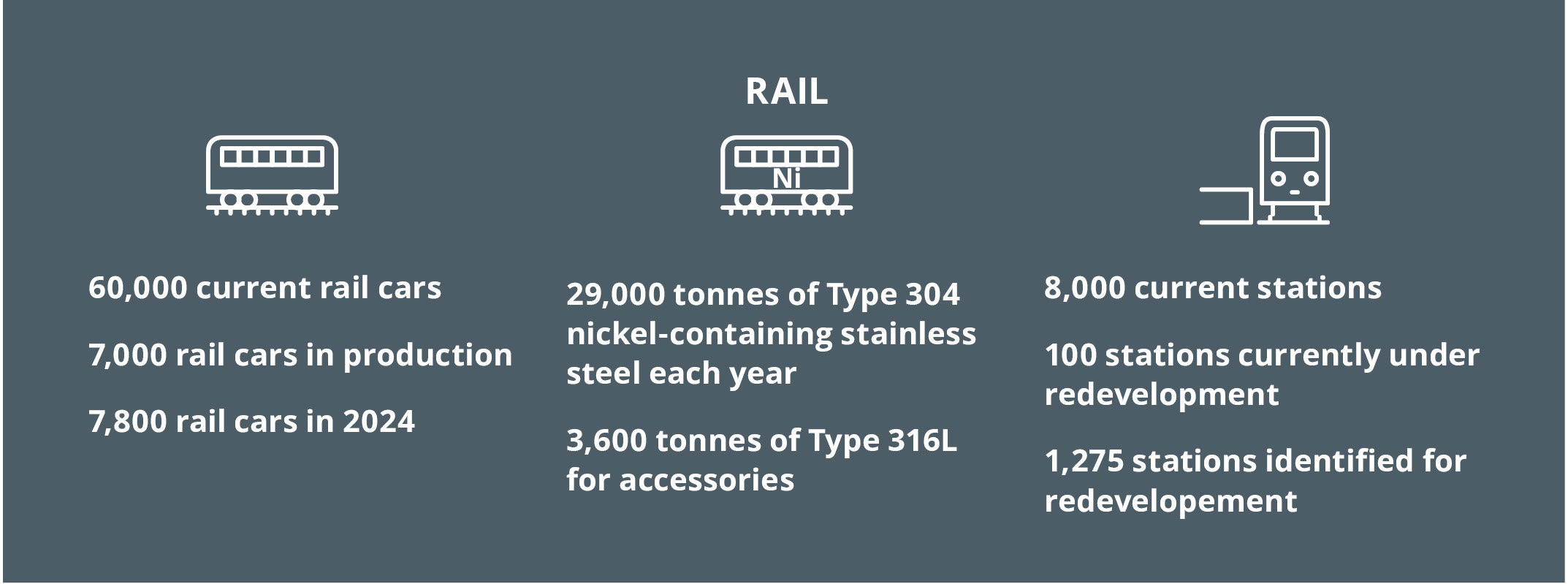
Mainline moves into high production
Mainline trains are a critical sector of Indian rail, facilitating passenger and freight haulage between cities. This part of the network operates over 60,000
rail cars.
Since 2018, Indian Railways has exclusively employed stainless steel for all of its coach production, including mainline and fast trains. Components prone to corrosion, such as the roof, trough-floor, toilet inlay, bio-toilet digester, water storage tanks, and entrance gangways, are all manufactured using nickel-containing austenitic grades of stainless steel. The side and end panels utilise utility stainless steels that are painted based on coach category requirements.
Indian Railways recently announced its annual coach production program, projecting an increase in stainless steel demand. This year, a total of 7,000 coaches are in production, with plans for 7,800 coaches next year. This will require over 29,000 tonnes of nickel-containing Type 304 stainless steel a year. An additional 3,600 tonnes of Type 316L (S31603) stainless steel will be used for accessories in coaches, such as bio-digester tanks.
As new coach designs are developed and the government’s focus shifts towards reducing weight, temper-rolled nickel-containing austenitic stainless steels for side walls are being considered. This will expand their share in the market over the next two years.
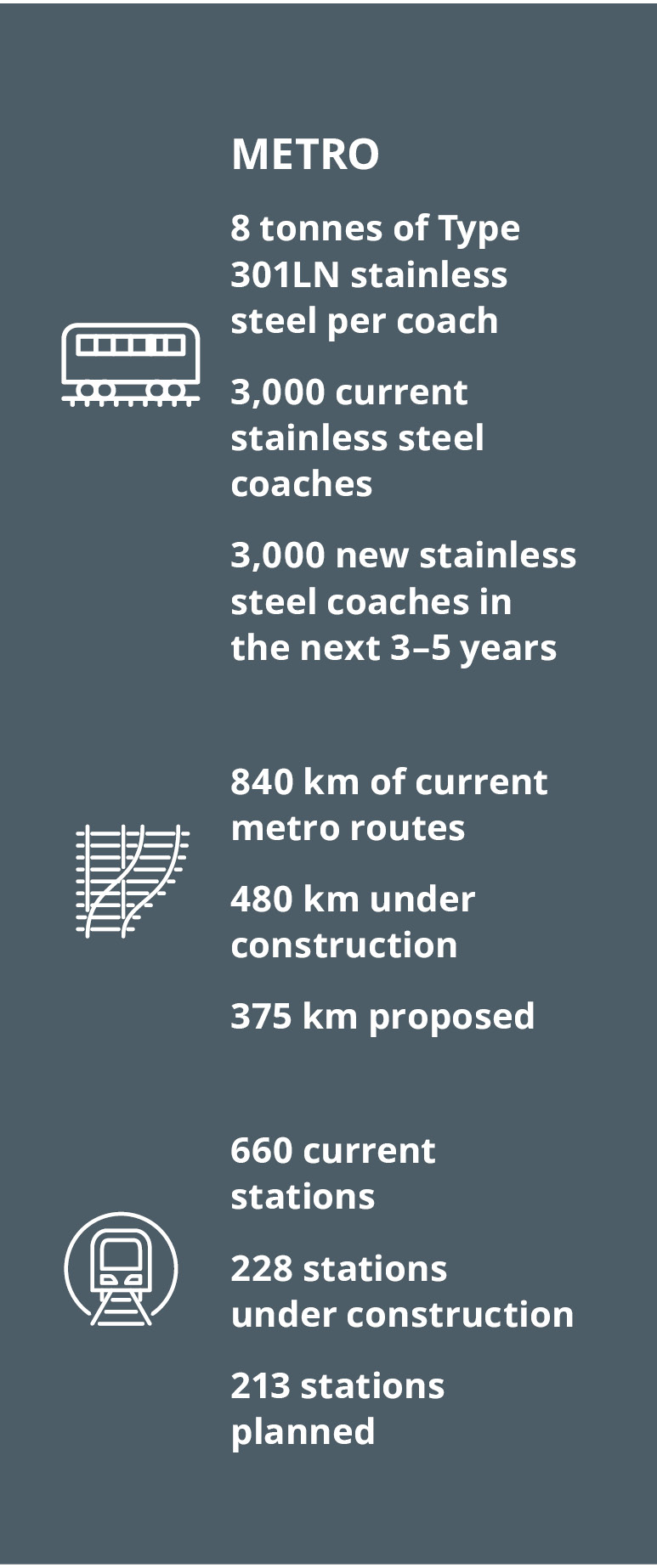
Large scale redevelopment plans
With around 8,000 mainline and other train stations in India, a comprehensive redevelopment plan was established to prioritise construction projects.
Approximately 100 stations are undergoing redevelopment as self-sustaining commercial real estate ventures. Notably, major railway stations in Delhi, Ahmedabad, and Mumbai are undergoing redevelopment with a combined investment of over USD 1.25 billion. Extensive work is underway at five other prominent stations. In these large-scale government projects, nickel-containing stainless steels are the preferred choice for facades, railing systems, and various amenities due to their corrosion resistance, durability, ease of fabrication, and low or minimal maintenance requirements.
Earlier this year, Indian Railways announced the Amrit Bharat Station Scheme, identifying a further 1,275 railway stations across the country for redevelopment. With a budgetary outlay of USD 30 billion for the next fiscal year, it is anticipated that nickel-containing stainless steel will play a prominent role in these developments.
This will ensure that India’s vital rail network continues to provide sustainable solutions to the challenges of urbanisation and industrialisation in the world’s most populous nation.
As India’s rail infrastructure expands, incorporating nickel-containing materials becomes increasingly crucial. It ensures the long-term sustainability and success of the rail network, supports the nation’s economic growth, and meets the demands of its burgeoning population.
This article was first published in our Nickel Magazine VOL 38-2, in Summer 2023.

